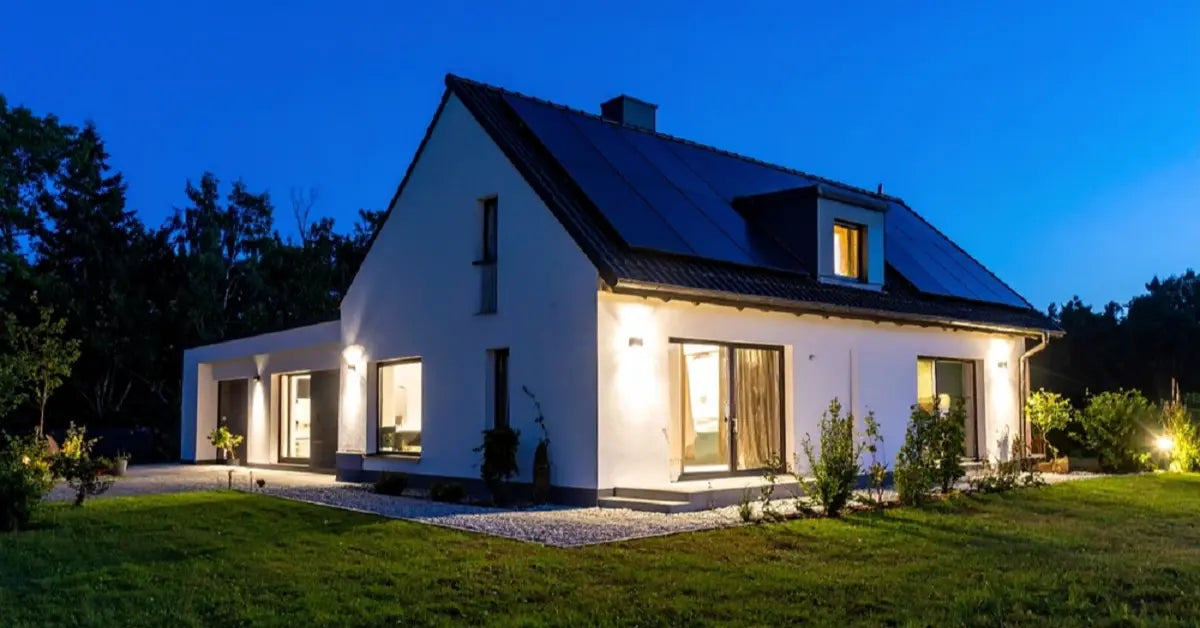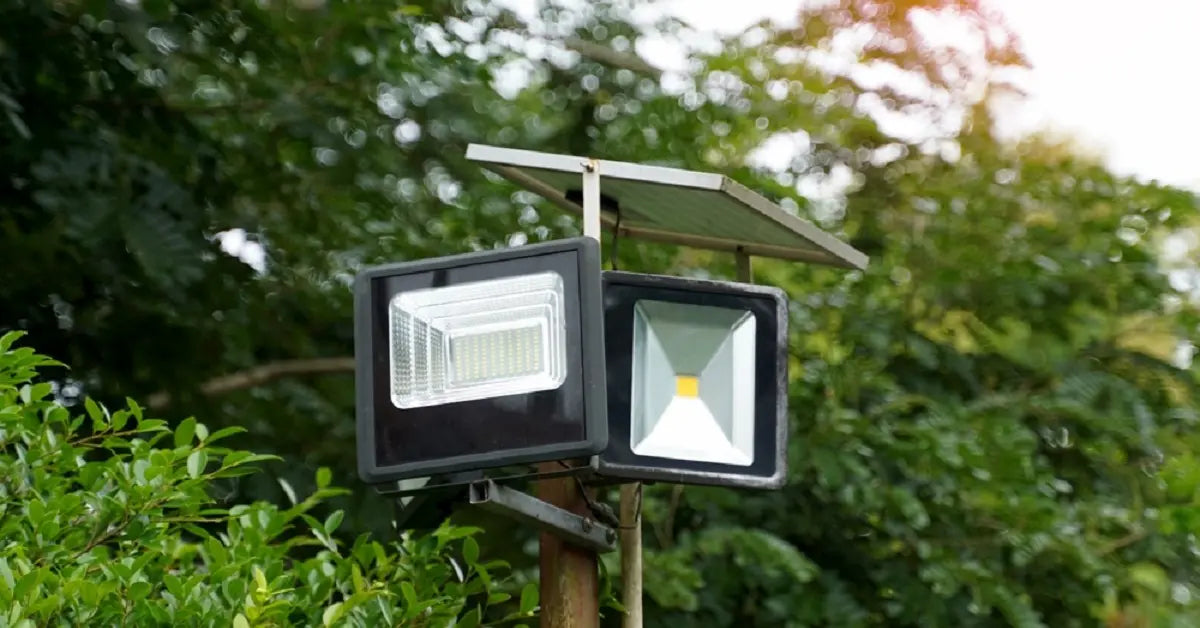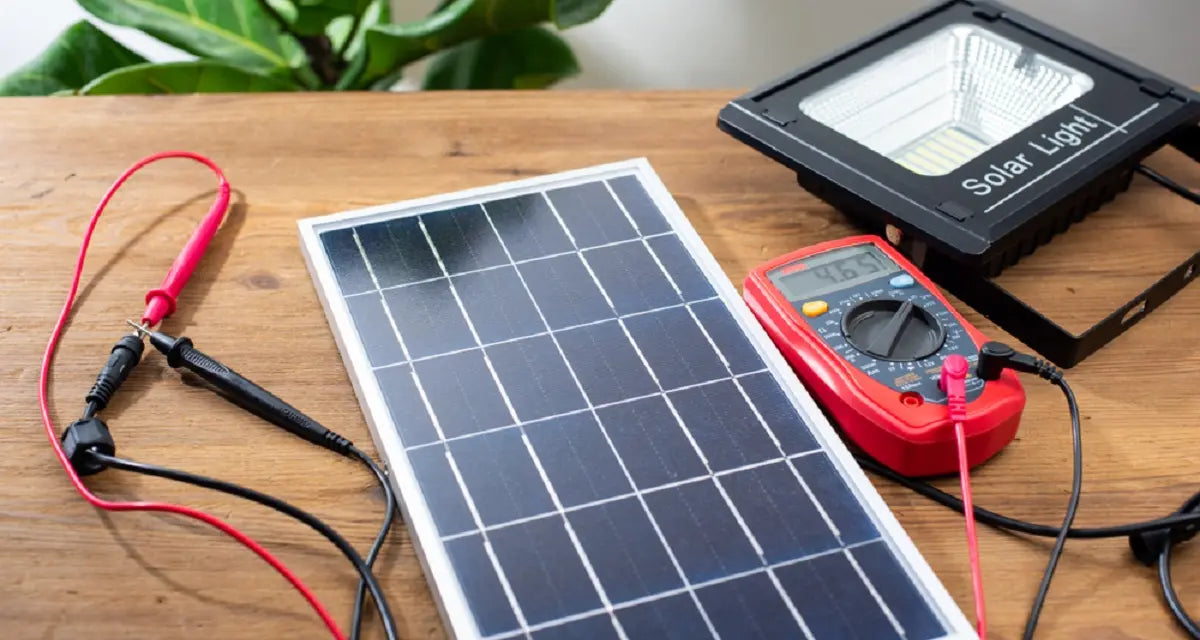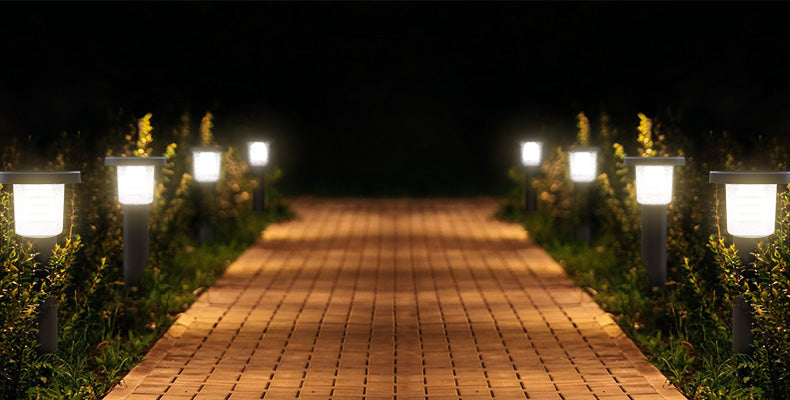Look, I get it. You're standing in your yard, planning out some pathway lighting or thinking about that dark corner by the garage. Solar lights seem perfect—no wiring, no electric bill, just free sunshine doing its thing.
But then comes the question that stops everyone: "How long will these actually last?"
I've been working in solar lighting technology for years, and I'm going to give you the honest answer.
Not the marketing fluff, not the best-case scenario—the real story about what determines whether your solar lights will still be working strong in five years or sitting dim and useless after six months.
The Short Answer: What's a Realistic Lifespan for Solar Lights?

Here's the truth: solar lights can last anywhere from 3 to 10 years. Some sources even cite a range of 2 to 15 years.
But that massive range isn't random—it's everything.
Let me break it down by what you'll actually find in stores:
The Budget Lights (Under $10): I'll be blunt. Most of these are what we in the industry quietly call "cheap junk." They use weak batteries and basic construction. You'll get maybe 6 to 12 months before they're dim or dead. Then you're buying again. You end up paying twice for half the performance.
Mid-Range Options ($20-$50): These are better, typically lasting around 2 to 3 years. They'll work fine for a while, but don't expect miracles when the battery starts fading.
Premium Engineering-Grade Lights: Now we're talking. Products built with quality components and real weather protection can run efficiently for 5 to 7 years, often pushing past 10 years with basic maintenance like battery replacement. This is where your investment actually pays off.
The difference? It all comes down to what's inside the light.
What Determines the Lifespan? A Look Inside Your Solar Light
Here's something most people don't realize: your solar light is only as strong as its weakest component. It's a system. When one part fails, the whole thing goes dark.
Let me walk you through each piece.
The Heart of the Light: The Rechargeable Battery

This is your first point of failure. Always.
The battery stores energy during the day and powers your light at night. But rechargeable batteries don't last forever. They degrade with every charge cycle.
Expected Battery Life: Most batteries give you 2 to 4 years before their capacity drops noticeably. You'll start seeing shorter run times and dimmer output.
Battery Chemistry Matters Big Time:
- Standard NiMH or NiCd batteries typically last 2 to 5 years
- Better Lithium-ion (Li-ion) options give you 3 to 5 years
- Premium Lithium Iron Phosphate (LiFePO₄) batteries? These can hit 10 to 15 years
Temperature stress accelerates this degradation. Extreme heat or freezing cold will drain battery life faster than normal use.
The Unsung Hero: The LED Bulbs

Good news here. Quality LED chips are built for the long haul.
We're talking 25,000 to 50,000 hours of operation, with premium components pushing past 100,000 hours. That's over 10 years of nightly use. LEDs almost never cause your solar light to fail.
When your light goes dim, it's not the LED. It's the battery.
The Toughest Enemy: External Factors (Weather & Debris)
Your light sits outside 24/7, taking punishment from nature.
Rain. Snow. UV rays beating down. Wind-blown debris. All of this attacks the protective housing and causes corrosion, cracks, and water ingress.
This is where the IP (Ingress Protection) rating becomes critical. This rating tells you how well the light resists dust and water.
Minimum Standard: Look for IP65 or higher. Period.
IP65 means the unit is fully dust-tight and can handle water jets from any direction. Some advanced lights offer IP67 or IP68 for submersion protection. Anything below IP65? You're gambling with durability.
How to Make Your Solar Lights Last Longer: A Proactive Maintenance Checklist
The good news is that simple, regular maintenance can push your lights well beyond their average lifespan. Think of it like maintaining any other tool—a little effort goes a long way.
Tip 1: Clean the Solar Panels Regularly
Dirt, pollen, leaves, bird droppings—they all accumulate on the solar panel surface and block sunlight. Less sunlight means incomplete charging. Incomplete charging means shorter run times and battery stress.
What to do: Wipe down the panels every few weeks with a soft cloth and mild detergent. Takes two minutes. Makes a huge difference in charging efficiency.
Tip 2: Plan for Battery Replacement
Remember when I said the battery is the weakest link? This is where that matters.
When your lights start dimming or only running for an hour or two, the battery's capacity has dropped. Don't toss the whole fixture. Replace the battery.
Most mid-range and premium lights make this easy—just unscrew a panel, pop in a new battery, and you're back to full performance. Expect to do this every 1 to 7 years depending on battery quality and climate. It's way cheaper than buying new lights.
Tip 3: Position for Optimal Sun Exposure
This is the most overlooked factor, and it's absolutely critical.
Your solar panel needs 6 to 8 hours of direct sunlight daily to fully charge. Not "mostly sunny." Not "bright shade." Direct sun.
Avoid placing lights under trees, near building shadows, or anywhere that gets blocked during peak sun hours. If the battery isn't getting a full charge every day, it'll degrade faster and your light will underperform from day one.
Tip 4: The Golden Rule—Choose Quality Over Price
I can't stress this enough: if you buy cheap, you'll buy twice.
Higher-quality lights use better components, durable housing materials like aluminum die-casting, and proper IP ratings to handle harsh weather. The upfront cost is higher, but the long-term value is unmatched. You're not replacing them every year. You're not dealing with dim, flickering lights. You're done.
Investing in Longevity: How to Choose a Light Built to Last

Now that you understand what makes solar lights fail—and what makes them last—let's talk about what to look for when you're actually shopping.
Look for a High-Capacity Battery: The 20,000mAh Advantage
Battery capacity isn't just about brightness. It's about longevity.
A large-capacity battery experiences less stress per charge cycle. It doesn't have to drain as deeply each night, which means less wear and tear. That translates directly into more years of reliable performance.
This principle of a large energy reserve is why we engineered Intelamp's 4000LM Linkable Solar Flood Light with a class-leading 20,000mAh battery—far larger than the tiny 600mAh cells you'll find in budget lights. This superior capacity is designed to withstand thousands of charge cycles and provide consistent power output for years.
It's not marketing. It's engineering for durability.
Demand a Weatherproof Build: Why IP65 is the Minimum Standard
We covered this earlier, but it bears repeating: IP65 is non-negotiable for outdoor lights.
This rating guarantees protection against dust ingress and low-pressure water jets. It's not "weather-resistant." It's a specific engineering standard with testing requirements.
Look for lights with corrosion-resistant materials, especially if you're in humid or coastal areas. Aluminum die-cast housings hold up better than cheap plastic shells that crack and fade.
Insist on High-Quality Components and Smart Design
Premium lights offer features that extend lifespan through smarter operation:
Separated Solar Panels: This is huge. With a separate panel on a cable, you can mount the light fixture under an eave or covered area while positioning the panel in direct sunlight. You follow the "optimal sun exposure" rule without compromise. The light stays protected, the panel gets maximum charge. Win-win.
Motion Sensors and Timers: Smart features like PIR motion sensing mean your light isn't running at full power all night. It conserves energy, reduces battery wear, and extends runtime when you actually need it. Less stress on the battery means more years of service.
Explore Durable Lighting Solutions for Every Outdoor Space
Since 2004, intelamp has been focused on solar lighting technology. We hold invention patents for the world's first solar light dedicated control chip. Our mission is straightforward: "Let the world use the best solar lights."
We achieve this through durable materials, advanced battery technology including LiFePO₄ options, and rigorous quality control. Our products are built to deliver long-term value, not short-term savings.
This focus on durable, high-performance components is a philosophy we apply across our entire lineup. We invite you to explore intelamp's full collection of solar outdoor lights to find the right long-term solution for your space—whether you need floodlights, wall lights, or post lights.
FAQ
Are solar lights worth the money?
Absolutely. Yes, a quality solar light costs more upfront than a basic wired fixture. But you're eliminating ongoing electricity costs and wiring expenses entirely.
A well-engineered solar light that lasts 7-10 years pays for itself several times over. That's real ROI, not wishful thinking.
Is it easy to replace solar light batteries?
In most mid-range and premium fixtures, yes. When your light starts dimming or running for shorter periods, swapping the battery is straightforward. Most designs let you access the battery compartment with a screwdriver.
Expect to replace batteries every 1 to 7 years depending on quality and climate. It's simple maintenance that restores full performance and extends the life of your entire fixture. Much cheaper than replacement.
The Bottom Line
Solar light longevity isn't luck. It's engineering, component quality, and maintenance. Understand what you're buying, take care of it properly, and invest in quality from the start. Your outdoor lighting will reward you with years of reliable performance.
More Resources
How Do Solar Lights Work? The Ultimate Simple Step-by-Step Guide
Do Solar Lights Need Direct Sunlight? The Complete 2025 Answer
Why Do Solar Lights Fog Up? The Complete Homeowner's Guide 2025
How to Charge Solar Lights Without Sun: 7 Methods + Ultimate Solution



